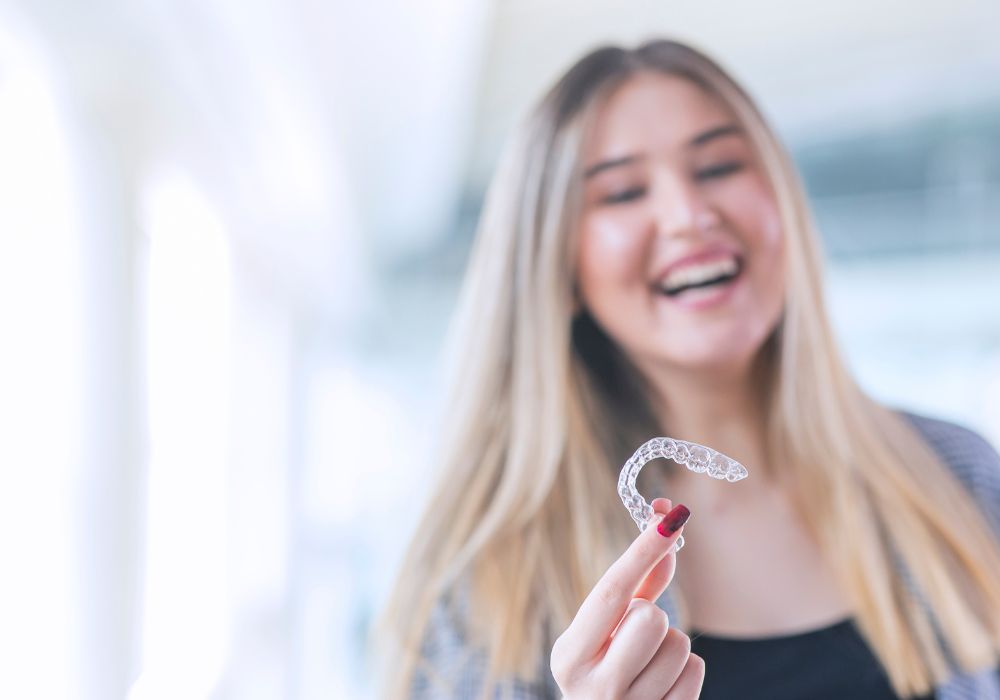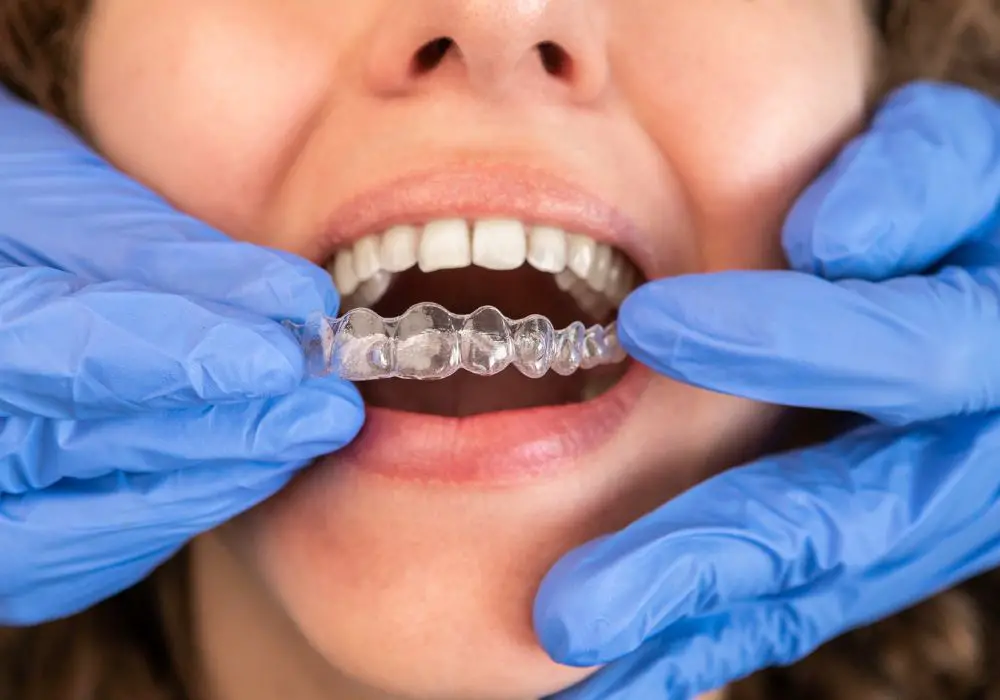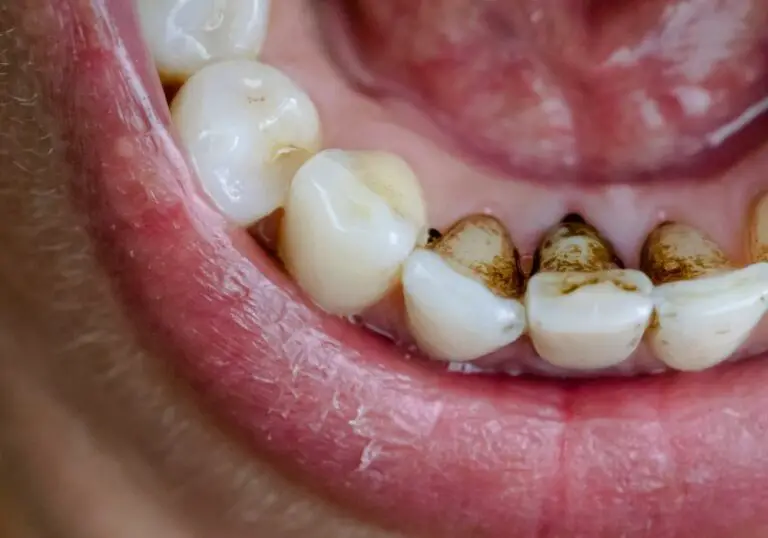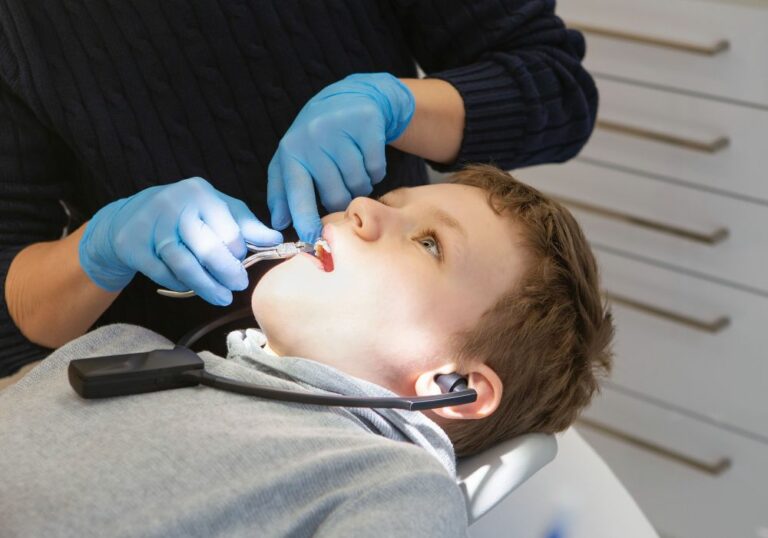Invisalign has become a highly popular alternative to traditional metal braces, with millions of patients opting for these clear, removable plastic aligners to discreetly straighten their smiles. However, some Invisalign wearers report increased tooth sensitivity, especially when they change to a new aligner tray.
Tooth sensitivity is common during Invisalign treatment, but typically mild and temporary in nature. Understanding the various causes of Invisalign-related tooth sensitivity can help you find relief and continue progressing comfortably with your orthodontic treatment.
Key causes of tooth sensitivity with Invisalign aligners

There are several key reasons why Invisalign trays can make teeth sensitive as they exert calibrated pressures to shift teeth into place:
1. Pressure on teeth from aligners
- Invisalign aligners must apply light, controlled forces against the teeth in order to guide teeth into proper alignment.
- The plastic material presses tightly against tooth surfaces to grip teeth and move them incrementally. This constant pressure against the teeth is the prime culprit of increased tooth sensitivity with Invisalign trays.
- As you change to a new aligner every 1-2 weeks, your teeth will be shifting and adjusting to the new pressures that aligner applies. This can make teeth feel extra sensitive, especially for the first 3-7 days as they acclimate.
2. Movement of teeth within sockets and bone
- As Invisalign aligners move your teeth closer to their ideal positions, the teeth themselves shift and rotate within the gum and jawbone structures.
- This movement happens slowly but stimulates the nerve endings in the gums, ligaments, and sockets surrounding the tooth roots. Much like a loose tooth can cause discomfort, this orthodontic tooth movement creates sensations that register as sensitivity.
3. Exposure of dentin from orthodontic movements
- The pressures involved in shifting teeth with Invisalign can sometimes expose small areas of dentin, the layer of inner tooth just beneath the enamel.
- Dentin contains thousands of microtubular channels with nerve endings inside that sense hot/cold stimuli. So newly exposed dentin areas become hypersensitive.
- Certain tooth movements that tip, rotate, or intrude teeth run a higher risk of exposing extra dentin and triggering sensitivity as a result. These more intense motions may be needed for proper alignment.
4. Irritation and inflammation of gums
- Aligners that press against, rub, or poke gums can cause irritation, inflammation and swelling of the gums around the teeth.
- This inflammation makes gums extra sensitive, which then indirectly increases overall tooth sensitivity while gums remain bothered.
- Aligners should be properly trimmed and smoothed by the dentist so no rough plastic edges dig into the soft gum tissues.
5. Microgaps formed between aligners and teeth
- If aligners do not fit tightly against the tooth surfaces, small gaps can form along the gumline or edges of the teeth.
- Food particles and bacteria may collect in these microgaps between aligner and tooth. This can lead to plaque buildup, possible decay, and gum irritation that increases sensitivity.
- Using rubber bands or “chewies” when inserting new aligners helps seat them completely against teeth to prevent microgaps from forming.
6. Less saliva flow while wearing aligners
- Saliva contains minerals that help strengthen and protect tooth enamel. Aligners prevent natural saliva flow around the teeth.
- Reduced flushing action of saliva allows more bacteria and acids to accumulate next to teeth, irritating gums and making teeth more prone to sensitivity.
- Drinking lots of water and removing aligners several times per day helps compensate for decreased saliva flow.
As you can see, the forces involved with Invisalign and side effects of wearing plastic trays over teeth contribute to increased tooth sensitivity for many patients. But understanding the exact causes helps dentists combat the issues to keep treatment comfortable.
When does tooth sensitivity from Invisalign aligners occur?

Patients report increased tooth sensitivity at very predictable times during Invisalign treatment:
- Initial insertion – When you first begin wearing Invisalign aligners, your teeth will immediately start experiencing forces as the plastic presses against them. This causes some mild adjustment sensitivity initially.
- After switching aligners – Each new aligner tray applies new pressures tailored to that specific stage of treatment. It takes 3-7 days for the teeth to adjust to these new forces after advancing into a fresh aligner. Sensitivity will be strongest during this initial adjustment period before subsiding.
- After IPR stripping – Teeth are often sculpted between certain stages to create space for guided movements. This interproximal reduction (IPR) stripping can expose sensitive dentin and make teeth feel uncomfortable for a few days afterwards.
- Around certain tooth movements – More intense motions like rotations, tipping teeth, extruding or intruding teeth often cause more sensitivity by exposing more dentin and stimulating gum tissues. Each aligner stage may feel a bit different.
- When drinking hot/cold beverages – Temperature sensitivities can flare up and persist even after basic discomfort subsides, as the nerve endings remain stimulated by orthodontic adjustments. This typically lasts no more than 1-2 weeks with a properly tracking aligner.
In general, the first 3-7 days of wearing a new aligner tray tends to cause the most discomfort. Teeth generally adapt to a particular aligner’s pressures after this initial break-in period.
Tips to relieve and prevent Invisalign tooth sensitivity

Though some sensitivity is expected with Invisalign treatment, the discomfort can still be bothersome. Try these tips to help minimize and manage tooth sensitivity throughout the process:
1. Use desensitizing toothpaste
- Brush with toothpaste for sensitive teeth that contains compounds like stannous fluoride, arginine, or potassium nitrate to help block discomfort.
- Special prescription high-concentration desensitizing pastes are also available from your dentist if over-the-counter options don’t provide enough relief.
2. Rinse with desensitizing mouthwash
- Swishing briefly with a mouthwash formulated for sensitive teeth can provide extra numbing and defense against pain triggers.
- Many brands now make mouthwashes containing potassium nitrate or other desensitizing ingredients to complement sensitive toothpaste.
3. Take OTC pain relievers
- For those first few painful days adjusting to a new aligner tray, take over-the-counter pain relievers like ibuprofen, naproxen sodium, or acetaminophen.
- These provide several hours of relief from orthodontic adjustment discomfort. Timed correctly, OTC meds help you push through the worst sensitivity period.
4. Use dental wax
- If aligner edges are rubbing or poking gums, soft orthodontic wax cushions the irritated areas.
- Simply pinch off a small piece and press it over the sharp aligner edge to create a buffer. This prevents a main cause of tooth discomfort – gum inflammation.
5. Rinse with fluoride
- A daily fluoride rinse strengthens enamel and reduces sensitivity risks.
- Fluoride makes enamel more resistant to the orthodontic forces that expose sensitive dentin. Rinsing takes seconds but helps a lot.
6. Avoid trigger foods/drinks
- Prevent aligners from pressing irritants directly against teeth by limiting acidic, crunchy, or excessively hot/cold foods that aggravate sensitivity.
- This gives teeth a chance to recover without constant bombardment from stimuli that kept nerve endings inflamed.
7. Use dental chewies
- Chew on soft rubber dental chewies after inserting new aligners to help seat them completely flush against teeth.
- Eliminating microgaps prevents trapped bacteria and food particles from causing irritation and sensitivity.
8. Keep aligners and teeth ultra clean
- Prevent bacteria, plaque buildup, and tooth decay that makes sensitivity worse by brushing and flossing thoroughly before inserting cleaned aligners.
- Use a toothbrush and cool water (no toothpaste) to gently scrub aligners daily.
9. Optimize aligner wear schedule
- Follow your prescribed aligner wear schedule diligently to make sure teeth move in careful increments.
- Don’t delay switching to new trays longer than recommended. Giving teeth proper rest periods between aligners keeps things moving comfortably.
10. See your dentist promptly if needed
- Schedule an appointment if sensitivity is severe or lasting longer than expected. The dentist can identify any issues causing problems and get treatment back on track.
Being proactive with at-home relief remedies and professional dental check-ups ensures you complete Invisalign treatment with the least discomfort possible.
Warning signs of problematic Invisalign tooth sensitivity

Sensitivity from Invisalign aligners is usually minor and temporary. However, more severe or persistent tooth sensitivity can indicate issues that need attention to avoid complications.
See your dentist right away if you experience:
- Constant throbbing toothaches rather than fleeting sensitivity
- Sensitivity lasting over 1-2 weeks without relief
- Discomfort severe enough to disrupt sleep or normal functions
- Aligners that feel painfully tight all the time
- Sensitivity combined with other symptoms like mouth sores, damaged teeth, or loose teeth
- Isolated sensitivity in just one or two teeth that could signal infection or injury
- No improvement in sensitivity after several days in a new aligner tray
- Increasing sensitivity with successive new trays rather than occasional adjustment flares
If pronounced sensitivity persists beyond the normal brief break-in period with new aligners, something is irritating the tooth nerves excessively and needs correction. Left untreated, problematic Invisalign sensitivity can derail orthodontic progress and create bigger dental issues. Have your dentist promptly evaluate and remedy any sensitivity lasting over 10-14 days.
Answers to common questions about Invisalign and tooth sensitivity
How long will Invisalign sensitivity last when adjusting to new trays?
Typical Invisalign sensitivity lasts around 3-7 days when first settling into a new aligner. Teeth need about a week to adjust to the forces. If sensitivity is not improving after 10-14 days in a tray, see your dentist.
Is some tooth sensitivity normal and does it mean Invisalign is working?
Mild to moderate sensitivity, especially when new aligners are inserted, means they are exerting effective pressure against teeth to move them properly. Some minor discomfort is normal and a sign treatment is progressing.
Can I take a break from wearing Invisalign if my teeth become too sensitive?
Taking 1 or 2 days off here and there as needed for teeth to rest should not impact overall Invisalign progress. But avoid extending your time without aligners regularly without approval, as this can slow tooth movements.
Will Invisalign sensitivity damage my teeth if I keep wearing aligners?
The minor nerve sensitivity from normal orthodontic movement should not harm teeth. But severe, constant pain indicates excess force so see your dentist promptly. Do not ignore ongoing pronounced discomfort as actual damage is possible.
How do I know if my Invisalign aligners have stopped fitting correctly?
Signs of poor fit include looseness, excessive gaps between teeth and aligner, discomfort when chewing/talking, gum irritation or redness where the plastic presses. Schedule an appointment immediately if aligners feel painfully tight all the time.
Can my dentist prescribe stronger medicine if OTC tooth sensitivity treatments don’t help enough?
Yes, your dentist may be able to provide prescription-strength sensitivity toothpaste, higher concentration fluoride rinses, or other medications to better manage severe or unremitting sensitivity caused by Invisalign treatment.
Conclusion
Mild to moderate tooth sensitivity is very common when wearing Invisalign aligners, especially in the first few days after advancing to a new tray in the series. Teeth need about 1 week to adjust to the forces applied by each aligner.
Staying on schedule with aligner changes and using at-home relief remedies can help manage typical sensitivity flare-ups. But contact your orthodontist promptly if you experience severe constant discomfort, pain lasting over 10-14 days, or other warning signs. Addressing any underlying fit issues or problematic movements causing intense sensitivity is key to staying on track with comfortable Invisalign treatment.
With proper precautions and follow-up care, minor temporary tooth sensitivity can usually be overcome, allowing you to continue progressing toward the beautiful, straight Invisalign smile you’ll love.






